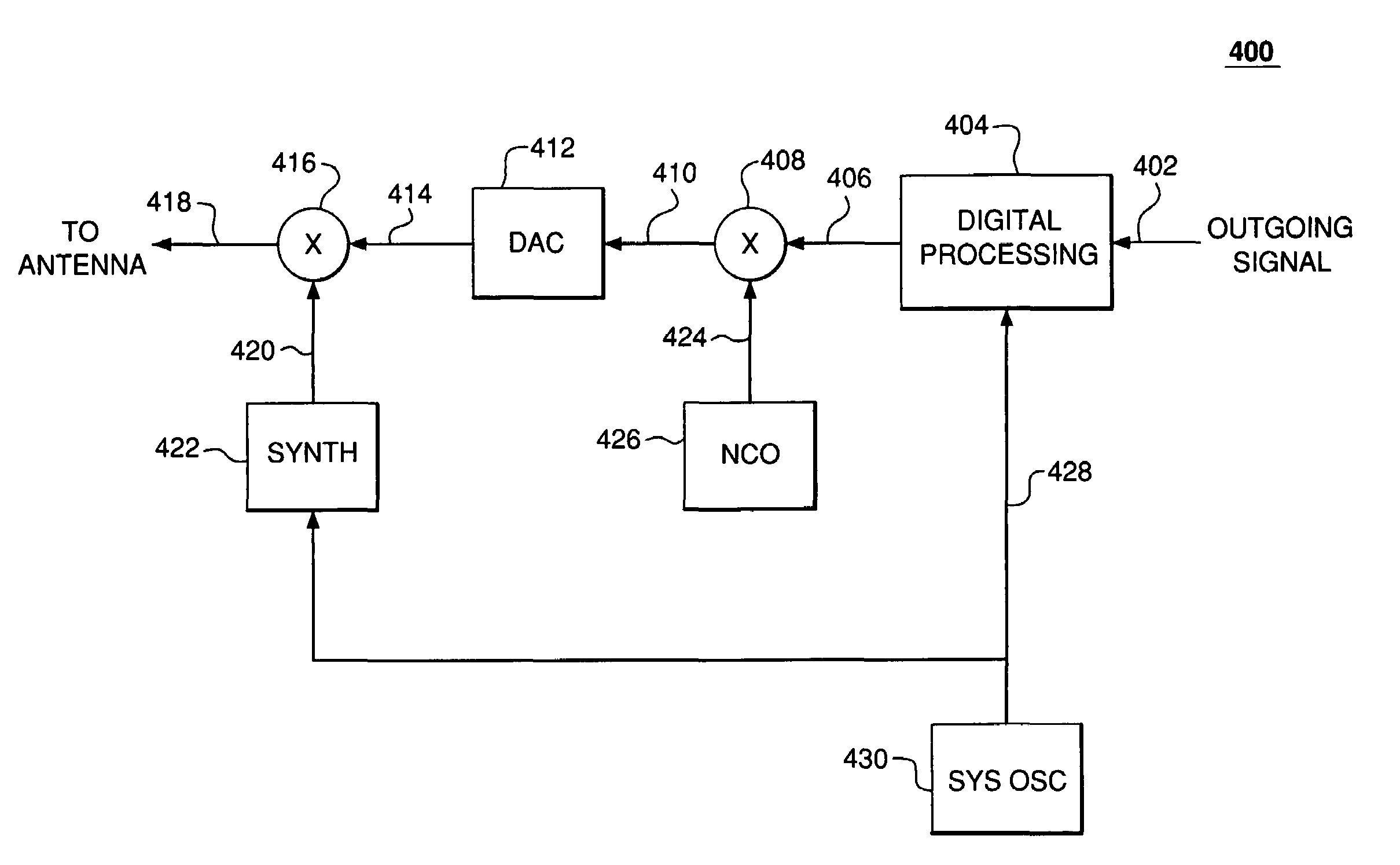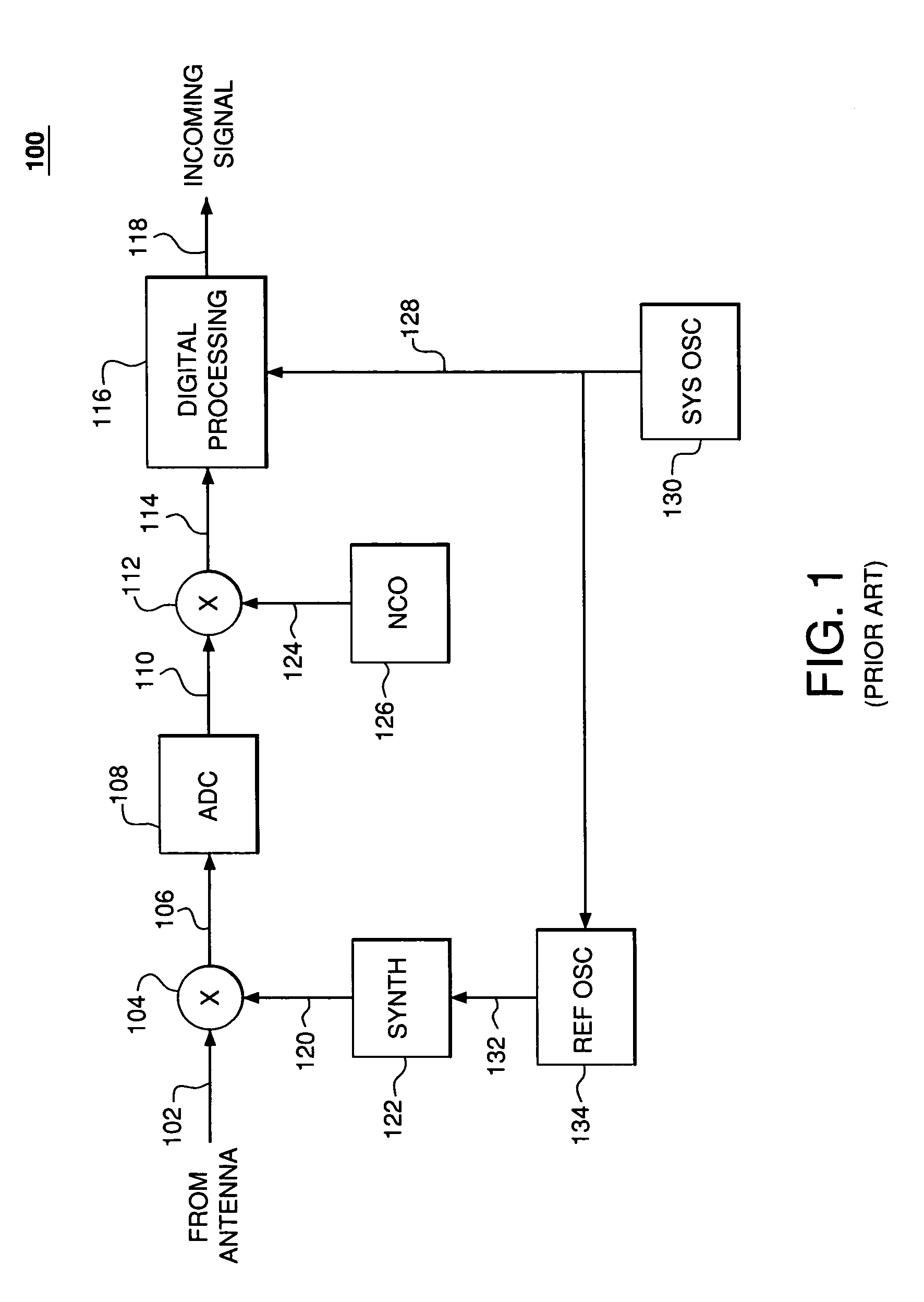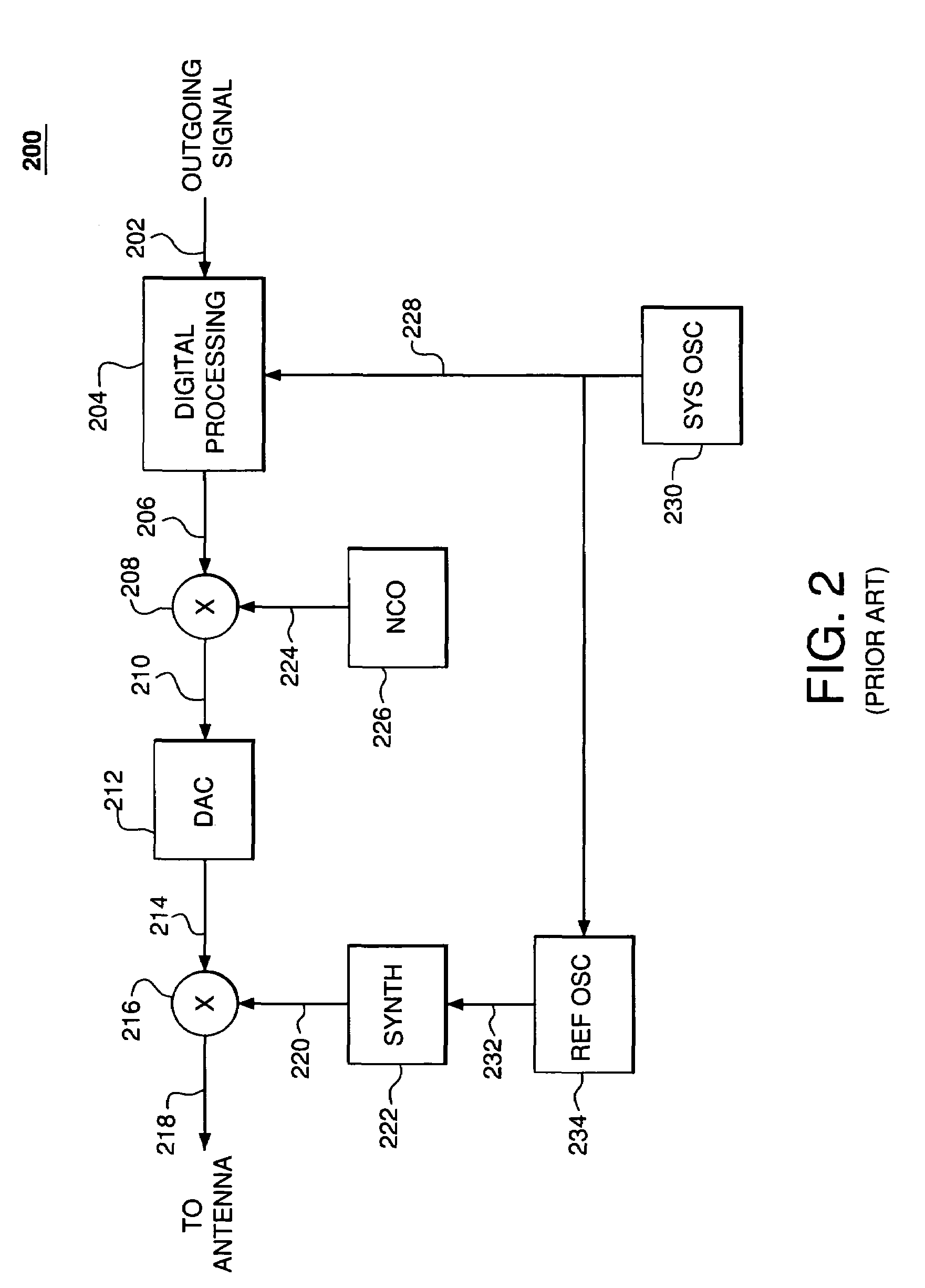Frequency offset correction in transmitters having non-ideal synthesizer channel spacing
a frequency offset correction and channel spacing technology, applied in the field of signal processing, can solve the problem that the reference oscillator of the synthesizer often needs to be phase-locked
- Summary
- Abstract
- Description
- Claims
- Application Information
AI Technical Summary
Benefits of technology
Problems solved by technology
Method used
Image
Examples
Embodiment Construction
[0017]FIG. 3 shows a high-level block diagram of a radio receiver 300, according to one embodiment of the present invention. Receiver 300 is similar to prior-art receiver 100 of FIG. 1, with corresponding elements 302-330 performing similar functions as elements 102-130 of FIG. 1, except that receiver 300 does not have a dedicated reference oscillator similar to reference oscillator 134 of receiver 100. Rather, in receiver 300, synthesizer 322 is driven directly by system clock signal 328 generated by system oscillator 330.
[0018]In the same possible application as the one described previously for receiver 100, receiver 300 is designed and tuned to operate for any channel in RF input signal 302 having a frequency from 1920 MHz to 1980 MHz in 200-kHz increments. As in receiver 100, in order to downconvert RF input signal 302 to IF, mixer 304 applies a mixing signal 320 generated by synthesizer 322. In receiver 300, however, synthesizer 322 uses 61.44-MHz system clock signal 32...
PUM
 Login to View More
Login to View More Abstract
Description
Claims
Application Information
 Login to View More
Login to View More - R&D
- Intellectual Property
- Life Sciences
- Materials
- Tech Scout
- Unparalleled Data Quality
- Higher Quality Content
- 60% Fewer Hallucinations
Browse by: Latest US Patents, China's latest patents, Technical Efficacy Thesaurus, Application Domain, Technology Topic, Popular Technical Reports.
© 2025 PatSnap. All rights reserved.Legal|Privacy policy|Modern Slavery Act Transparency Statement|Sitemap|About US| Contact US: help@patsnap.com



